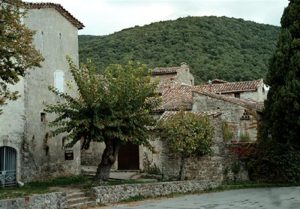Noyon is an important historic site in France
In this city, the last Merovingian king, Chilpéric II, was buried in 721, Charlemagne was crowned king of Neustria in 768 and Hugues Capet was crowned king of France in 987.
Until the French Revolution, Noyon was an important cultural and intellectual centre, as can be seen from the superb XVIth century library in the chapter house ; it was also, however, a hot-bed of revolt against the cathedral Chapter, who wielded enormous power and was very corrupt. The people of Noyon passionately defended their rights ; for this reason, it became one of the first independent communes in France in 1108, seizing from the ecclesiastical authorities its own town charter of civil rights.
The museum of the great French reformer Calvin
Calvin was born in Noyon on 10th July 1509 ; from his childhood onwards he was deeply influenced by his pious mother and witnessed the growing difficulties which his father had when dealing with the canons and bishops (he was an administrator of their property). His mother, Jeanne Lefranc, died before he was 10, but nonetheless she instilled in him a sense of mysticism and from his father, Gérard Cauvin, a somewhat rebellious temperament, which was typical of many inhabitants of Picardy. When he was a student in Paris, Orléans and Bourges, he came into contact with the new humanist philosophy and especially the ideas of Luther – it was a dramatic moment in his life. He became a follower of Luther during the winter of 1532 to 1533 and had to go into exile at the age of 25 ; he spent more than half of his life as a political refugee in Geneva where he died on 27th May 1564, after having written a great many important works which influenced the whole world.
The house where Calvin was born became part of the Hôtel de France, built in the XVIIth century on the place aux Blés, (in fact, a small yard separated it from the “place”). This is what we can infer from drawings, engravings and photographs taken before 1918. During the wars of religion and succeeding invasions the house remained intact – in February 1553, Calvin wrote in a letter “My father’s house is the only one still standing : it is not reduced to rubble like the other houses of this town.”
Calvin's house was destroyed in the First World War and then rebuilt
The Germans took possession of Noyon in 1914 – soon after this a memorial plaque was put up on the house which stated that it was the historic birthplace of the reformer. In the last year of the war it was completely destroyed, as were all the other houses in the town. The imposing city residences which used to hide it from view were never rebuilt.
The Société de l’histoire du protestantisme français (SHPF), bought the ruins of the house and thanks to an international fund which was raised to finance the project, the lower part of the building (as it was before 1917), was completely restored. This was largely due to the efforts of two friends, Monseigneur Lagneau, archpriest of the cathedral and pastor Pannier, general secretary of the SHPF. The top part of the building was added later in order to transform it into a museum. It was inaugurated in 1930, damaged by bombing in 1944, restored in 1954 and, thanks to the perseverance of pastor Georges Casalis, modernized in 1983 to become the building we see today.
There is a large library and many pictures in the museum
There is a large library with original editions of the Bible, the New Testament, Commentaries etc. In addition, you can find several portraits, scenes of political or religious life in the XVIth century and engravings of Jean Calvin as well as some other reformers. The Noyon he knew as a child is brought to life through pictures of the town and historic sites. There are documents such as the well-known “Placards” of 1534, old maps, medals and seals. Furniture can also be found here, for example a pulpit from the “Désert”, XVIth century chests and a copy of Calvin’s “seat of majesty”.
The SHPF owns this museum, which is run by the town of Noyon and the Association of Friends of the Calvin Museum.
Jean Calvin museum
6 place Aristide Briand
F-60400 Noyon
Tel. +33 (0) 3 44 44 03 59
Contact : assist.musees@noyon.fr








